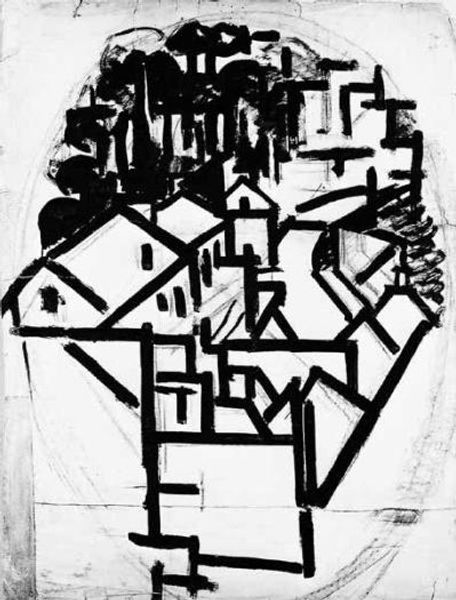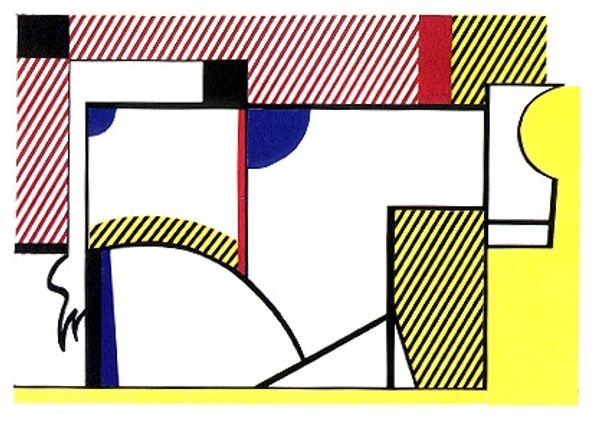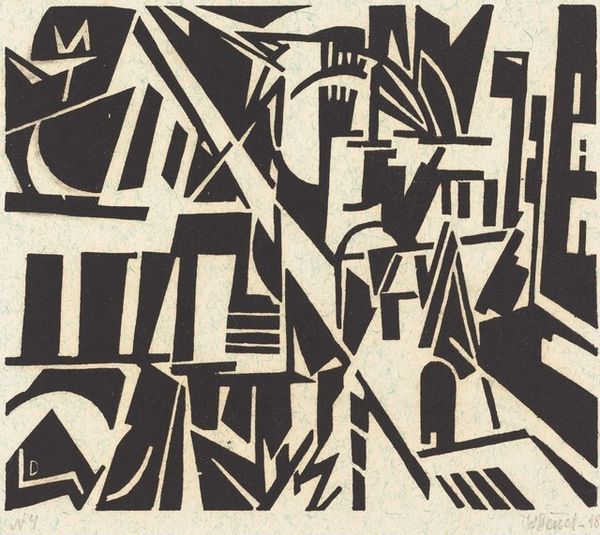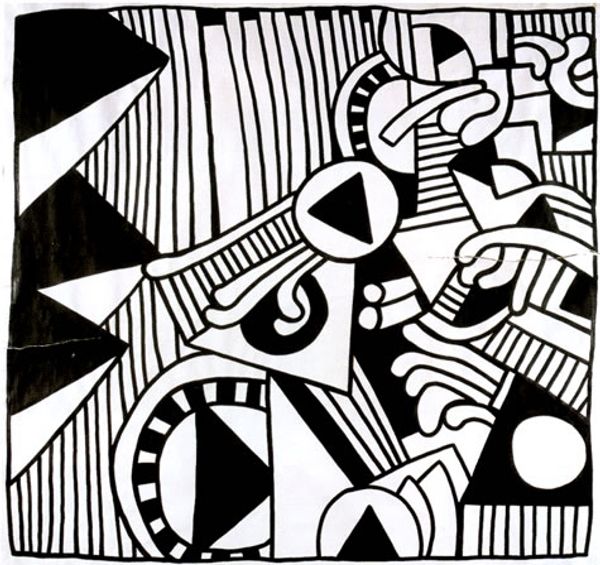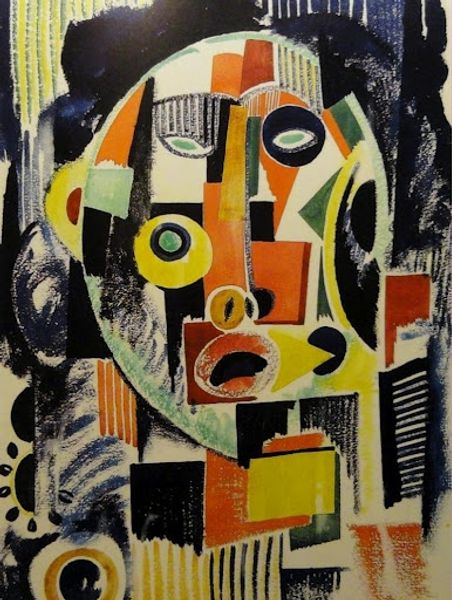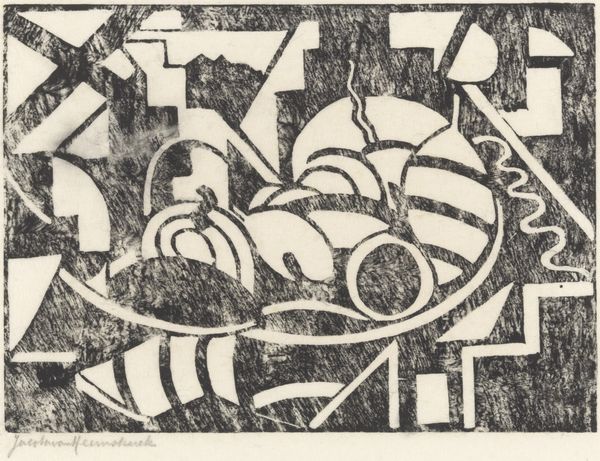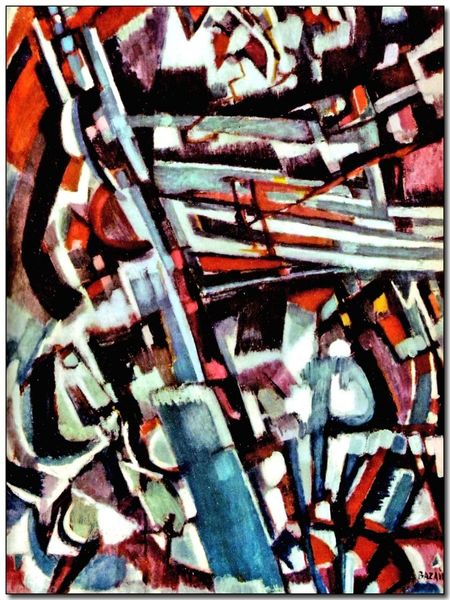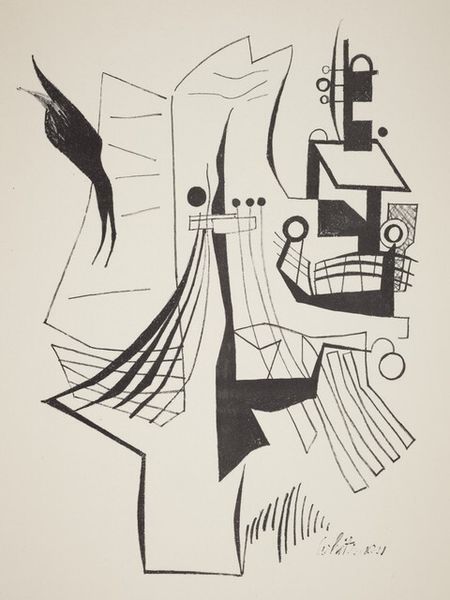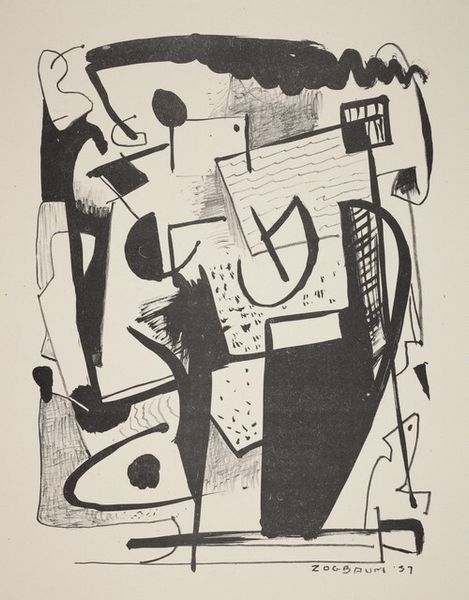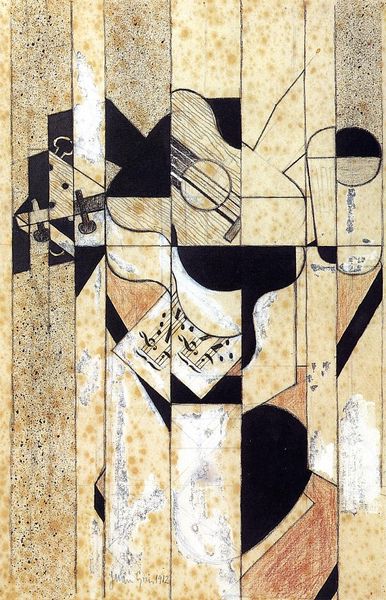
drawing, ink
#
drawing
#
constructivism
#
neo-pop
#
form
#
text
#
ink
#
geometric
#
geometric-abstraction
#
abstraction
#
line
#
modernism
Copyright: Keith Haring,Fair Use
Curator: Well, here we have an intriguing untitled ink drawing from 1978 by Keith Haring. Its stark black and white contrast grabs you right away. Editor: Absolutely, my immediate impression is one of intense energy and almost chaotic structure. There’s a dynamism created by the density of lines and shapes. What were Haring’s influences at this point in his career? Curator: He was absorbing the artistic currents of his time, and this work reflects that absorption quite strongly. You can certainly see echoes of constructivism and modernism here, with the heavy reliance on geometric abstraction and those firm black lines. The way the artwork engages with form hints at the early stages of what would become Haring's iconic pop art. Editor: What I find really compelling are the hints of recognizable shapes amidst all the abstraction. Those circles with lines, they almost read as simplified clocks or targets. Does that connect to any recurring themes in his work, do you think? Curator: The title given at the bottom alludes to Kandinsky, Mondrian, and… "Lobotomy." It is hard to imagine Haring was unfamiliar with the sociopolitical turmoil that saw various political dissidents falsely committed. He makes strong claims here about who gets to define insanity, sanity, and what the purpose of modern art should even be in the late 70s. Editor: It's fascinating how symbols operate, especially when juxtaposed in ways that seem jarring initially. Circles do possess archetypal associations of completion and unity, but with that imposed line bisecting them, any semblance of totality ruptures immediately. Curator: Right, it's that disruption that makes it so potent. His visual vocabulary challenged conventional artistic boundaries but also broader societal expectations regarding visual communication itself. Haring used simplicity as a tool to deliver profound social and political critiques. Editor: Looking closely, I appreciate even more Haring's deft handling of ink. The precision in his linework is remarkable; that contrast adds depth but also invites you to decode potential symbolic meanings buried beneath the surface of shapes alone. Curator: Indeed, and through his art, we continue grappling with how art interacts with its socio-cultural context and challenges established norms. It prompts us to consider the evolution of Haring's visual lexicon and the role institutions play in shaping artistic narratives. Editor: Exactly. After our brief foray, I feel more grounded now. Haring's language makes visible, the forces and counter-forces shaping our culture. Curator: A valuable insight and a suitable place for us to conclude.
Comments
No comments
Be the first to comment and join the conversation on the ultimate creative platform.
